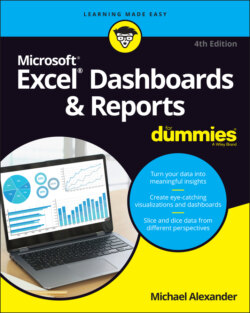Читать книгу Excel Dashboards & Reports For Dummies - Michael Alexander - Страница 25
Avoid the fancy formatting
ОглавлениеThe key to communicating effectively with your dashboards is to present your data as simply as possible. There’s no need to wrap it in eye candy to make it more interesting. It’s okay to have a dashboard with little to no color or formatting. You’ll find that the lack of fancy formatting only serves to call attention to the actual data. Focus on the data and not the shiny happy graphics. Here are a few guidelines:
Avoid using colors or background fills to partition your dashboards. Colors, in general, should be used sparingly, reserved for providing information about key data points. For example, assigning the colors red, yellow, and green to measures traditionally indicates performance level. Adding these colors to other sections of your dashboard only serves to distract your audience.
De-emphasize borders, backgrounds, and other elements that define dashboard areas. Try to use the natural white space between components to partition the dashboard. If borders are necessary, format them to hues lighter than the ones you’ve used for your data. Light grays are typically ideal for borders. The idea is to indicate sections without distracting from the information displayed.
Avoid applying fancy effects such as gradients, pattern fills, shadows, glows, soft edges, and other formatting. Excel makes it easy to apply effects that make everything look shiny, glittery, and generally happy. Although these formatting features make for great marketing tools, they don’t do your reporting mechanisms any favors.
Don’t try to enhance your dashboards with clip art or pictures. They not only do nothing to further data presentation, but they also often just look tacky.
